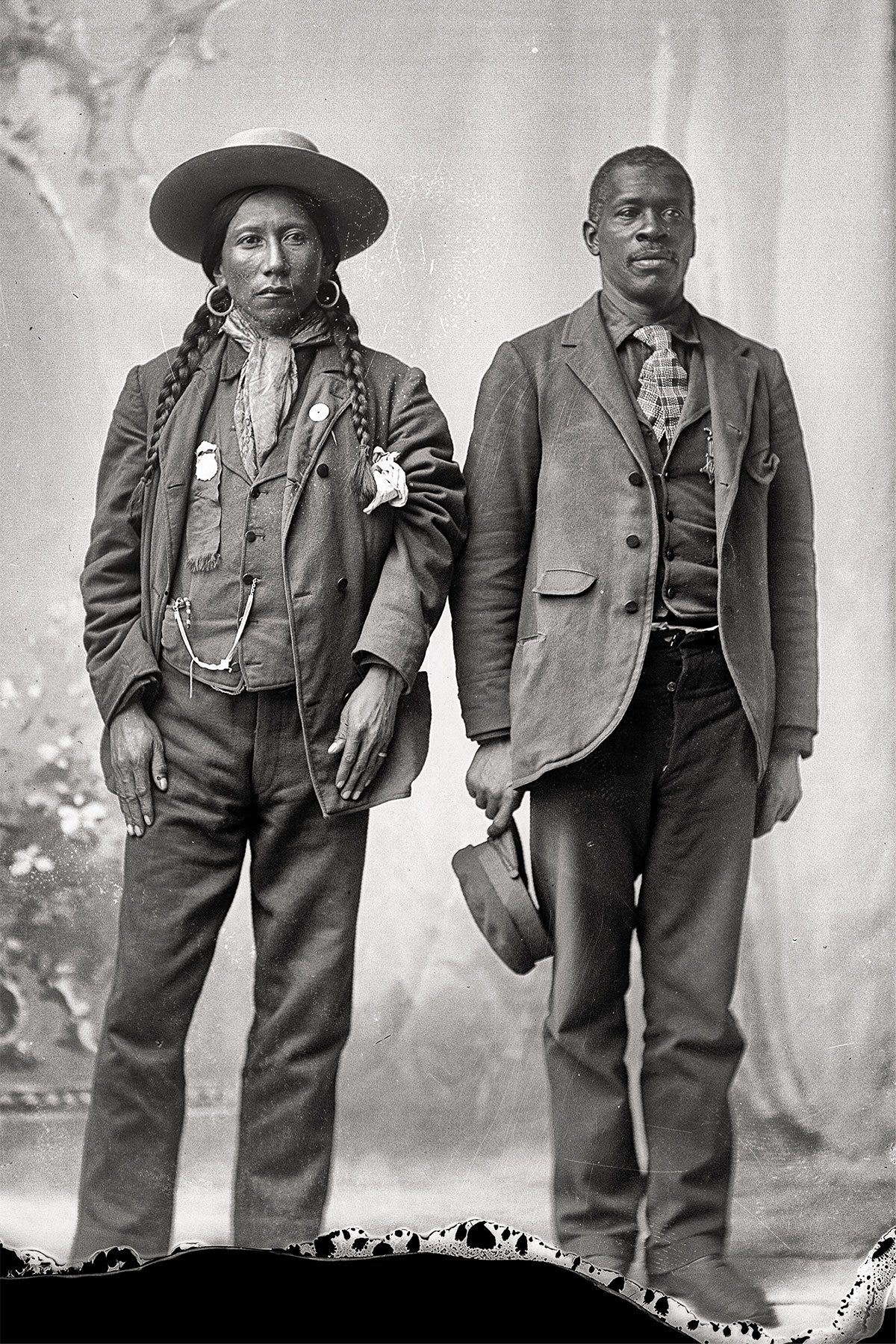History Colorado’s Fort Garland Museum & Cultural Center has worked diligently in partnership with eight independent artists to create a new exhibition which disrupts the common narratives of manifest destiny and settlement of the American West. Titled buffalo soldiers: reVision this exhibition opens Saturday, June 24, exactly 165 years after Fort Garland was commissioned by the United States and presents a visual interpretation of the history and impact of the all Black Army regiments that were established in 1866 following the Civil War.
Known as Buffalo Soldiers, these regiments – including the 9th Cavalry who were stationed at Fort Garland from 1875 to 1879 – played a role in American westward expansion and the displacement of Indigenous populations.
Many of those who served as Buffalo Soldiers were formerly enslaved African Americans and military service offered them the opportunity to make a living and provide for themselves and their families.
The 9th Cavalry, as well as the other Buffalo Soldiers regiments, served valiantly and honorably despite facing discrimination and segregation. Their legacy, however, is a complicated one for they often stood on the front lines of conflict with Native Americans.
buffalo soldiers: reVision also explores the prejudice and systemic racism faced by Buffalo Soldiers following emancipation, as well as the lasting impacts of this history in Southern Colorado.
“This exhibition allows us to explore the complexity of this history in order to understand, acknowledge, and reconcile some of the most difficult aspects of our collective history while updating and expanding our understanding of the Buffalo Soldiers,” said Eric Carpio, History Colorado’s chief community museum officer and director of Fort Garland Museum & Cultural Center. “It’s also a chance to look forward to the future of historical interpretation of the American West with renewed perspective and wisdom so we can tell a more inclusive and representational history.”
buffalo soldiers: reVision features the works of a team of artists who have been partnering with Carpio to collectively understand this multifaceted history with the help of Buffalo Soldier scholars, descendants, community members, and Tribal Partners. This exhibition is made possible through sponsorships from Arts in Society and the National Endowment for the Humanities.
The creations from this team of artists take multiple forms ranging from prints, which layer historical photos and documents with contemporary drawings, to poetry which evokes the emotional toil of this part of our shared history.
Included amongst the artists working on the project are: lead artist, Chip Thomas, aka jetsonorama, who created the Unsilenced: Indigenous Enslavement in Southern Colorado installation currently on display at Fort Garland; and Esther Belin (Diné), award winning poet and author of From the Belly of My Beauty.
Thomas was intrigued to pursue this project because it allowed him to explore a number of questions of interest to him over the 35 years he has spent working on the Navajo Nation including: “how did formerly enslaved peoples rationalize the subjugation of another race,” and “in what ways did Buffalo Soldiers connect with the lands they were helping to take away from Indigenous peoples?”
“It seems the land provided solace and space for contemplation, maturation and dreaming of new possibilities in a way the Black soldiers couldn’t consider in the Reconstruction South when enslavement was replaced by Black Codes,” Thomas said. “For the Buffalo Soldiers the expansive horizons of the west are a metaphor for unlimited possibilities to discover oneself as they continue to do to this day.”
Belin expressed that this project has been a challenging one as it required her to grapple with the difficult history of how Indigenous people were captured, slaughtered, and decimated by the United States government, including the very Buffalo Soldiers whose histories reVision tells. The process to create art in response to this complicated history entailed empathetic journeys into the choices of the Buffalo Soldiers.
“I wondered if those men ached at witnessing Indian people die and be slaughtered to protect their land,” Belin said. “I wondered at the idea of property and how the soldiers queried that concept, possibly overhearing conversations that Indians did not feel they owned the land but rather the land was for them to use and be stewards of.”
Thomas’ contribution to reVision highlights Native and Black interactions by emphasizing established friendships and alliances in the two communities that challenge the stereotypical narratives. In comparison, Belin wrote historical narratives in poetic form, unpacking themes of race, land, and the harm unleashed by westward expansion while providing an emotional testament to the difficult choices Buffalo Soldiers faced.
Another crucial part of this exhibition is the building in which it is displayed. At the base of the traditional eastern boundary mountain for the Diné nation, Mount Blanca, the location of Fort Garland represents unsettled history. This revisioning initiative offers a pledge to present the complex history of the region.
“The West Officers Quarters is one the of the five remaining buildings that was constructed in 1858 when the former US Army fort was established,” Carpio said. “The whitewashed adobe walls and wooden vigas that have been here since the 9th Cavalry was stationed here in the late 1870s, add a powerful element of ‘place’ to the exhibition.”
To commemorate the opening of buffalo soldiers: reVision, Fort Garland Museum & Cultural Center is holding an opening program on June 24 from 10 – 11 a.m. This program includes a welcome of seven of the eight artists involved in the project and a blessing by Johnny Taylor Valdez – a descendant of John Taylor and Kitty Cloud (Ute), a well-known Buffalo Soldier and his wife whose stories are explored in the exhibition.
The exhibit opening is free and open to the public. Admission to the Fort Garland Museum & Cultural Center is free on June 24, 2023.

